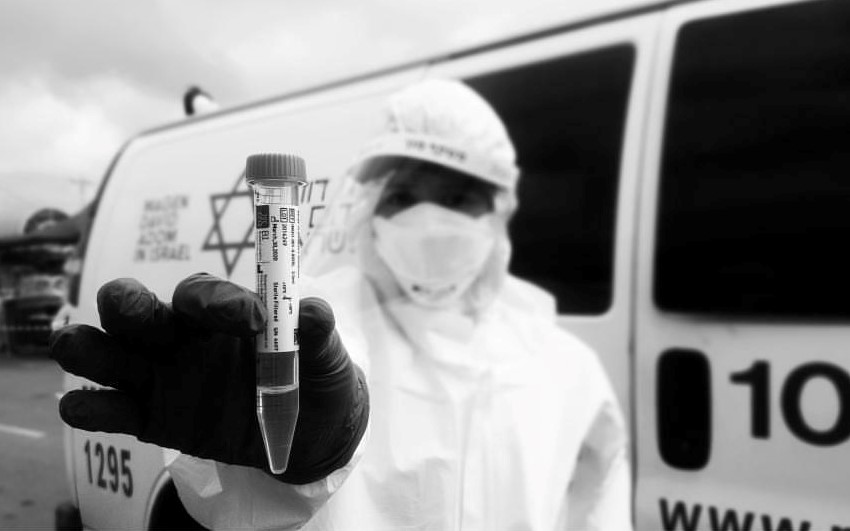Leaders of the Arab community in Israel, including Knesset members from the Joint List, maintain that Arab citizens face discrimination in testing for COVID-19. Figures released by the Ministry of Health show that the number confirmed infections among the Arab population is significantly lower that among the Jewish population. Out of just over 9,000 confirmed cases in Israel on April 7, only about 200 were in predominantly Arab localities.
This is a surprising figure, given that Arab citizens constitute 20% of Israel’s total population. The highest concentration of confirmed Arab cases, 19, is in Umm al-Fahm, followed by Tamra, in the north, with 15 infections. Nevertheless, the number of tests allocated for Arab towns and villages is disturbingly lower than for Jewish areas. Speaking about testing, Hadash Knesset member Yousef Jabareen (Joint List), a resident of Umm al-Fahm, told Al-Monitor, “It is incredible that as Knesset members, we had to pressure the Health Ministry to get what any Jewish citizen can take for granted in Israel.”
According to Jabareen, it took enormous effort and pressure by the leaders of the Joint List and the heads of Arab local authorities to set up two drive-thru testing facilities, in Wadi Ara, in the north, and in Ar’arat-an-Naqab, in the south. The two stations helped increase the number of tests performed in Arab communities to around 10,000, he estimated.
“This national blindness, which hurts everyone, clearly reveals the lack of Arab representation at the professional decision-making level,” said Jabareen. He further remarked that there is no professional Arab team that works with the Ministry of Health to advise it or provide an up-to-date picture of the Arab community and its needs. For instance, Magen David Adom (Israel’s National Emergency Pre-Hospital Medical and Blood Services Organization) does not even have an Arabic-language version of the questionnaire required to conduct coronavirus testing. So far, local organizing has driven finding solutions to such problems.
“When you feel like the system is not only estranging but alienating too, Israeli Arab citizens realize that there is no one that they can rely on, so they create independent self-help systems,” Jabareen said. According to him, the High Follow-Up Committee for Arab Citizens of Israel, the heads of Arab local authorities, and Knesset members from the Joint List moved to create emergency teams and a control center of sorts to work in conjunction with neighborhood committees. “These teams will follow the processes, issue warnings, and relay messages and data,” Jabareen explained. “Every Arab citizen realizes that in situations like these, they need to take more personal responsibility, so that they are not entirely depend on the authorities.”
Despite the discrimination faced by Arab localities, it is believed that the number of people infected there is indeed considerably lower than in the Jewish community. Some confirmation of this can be gleaned from the statistic: As of April 7, among the 65 Israelis who had died of COVID-19, not one of them was from an Arab town or village. Similarly, not one Arab citizen has been hospitalized or placed on a ventilator, and therefore considered to be in critical condition. A possible explanation for the wide gap in numbers could be that the Purim festivities in Jewish communities from March 9-11 served as a prime accelerator of infections. Another possible factor is that the number of people traveling overseas, and potentially bringing the virus back to Israel, is lower among the Arab population than among the Jewish population.
After the outbreak of the coronavirus in Israel, and given that the number of people infected is now approaching 10,000, two disturbing factors must advise continued caution: (1) Arab citizens meet the Jewish population on a daily basis; (2) many of the medical professionals operating in Israeli hospitals are Arabs.
“One-fifth of all doctors are Arabs,” said Jabareen. “One-quarter of all nurses are Arabs, and half of all pharmacists live in Arab localities, not to mention the significant percentage of hospital administrators. Our greatest fear is that they are on the front line every day, and then they come home, where they can transmit the virus.” According to Jabareen, there has been an increase in the number of nurses infected with the coronavirus, apparently at their workplaces — hospitals.
Related:



